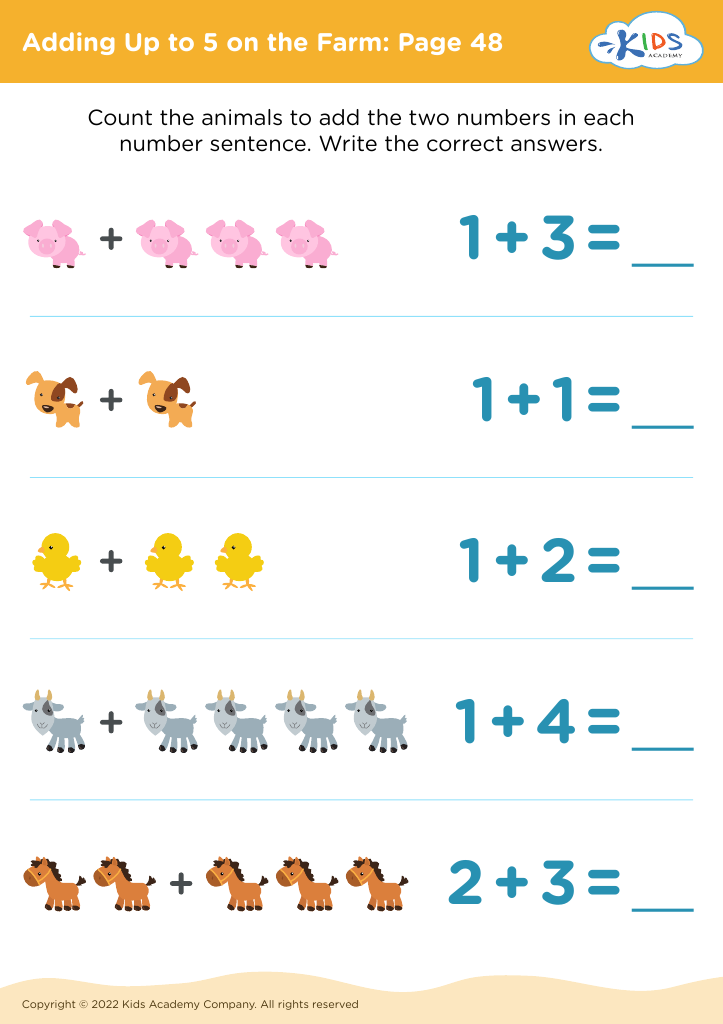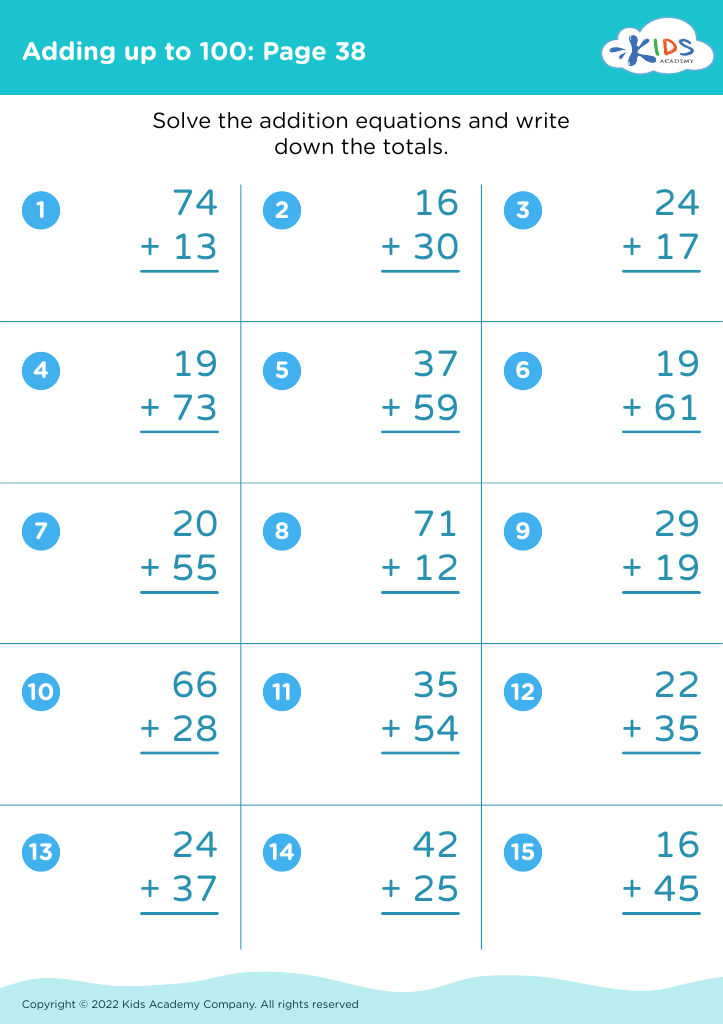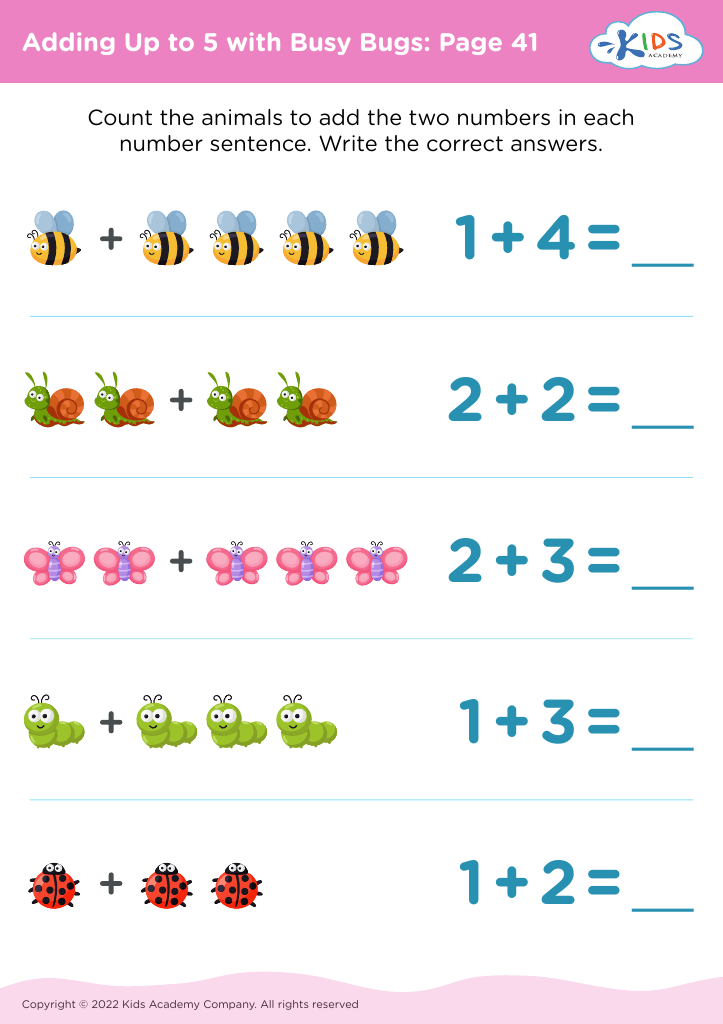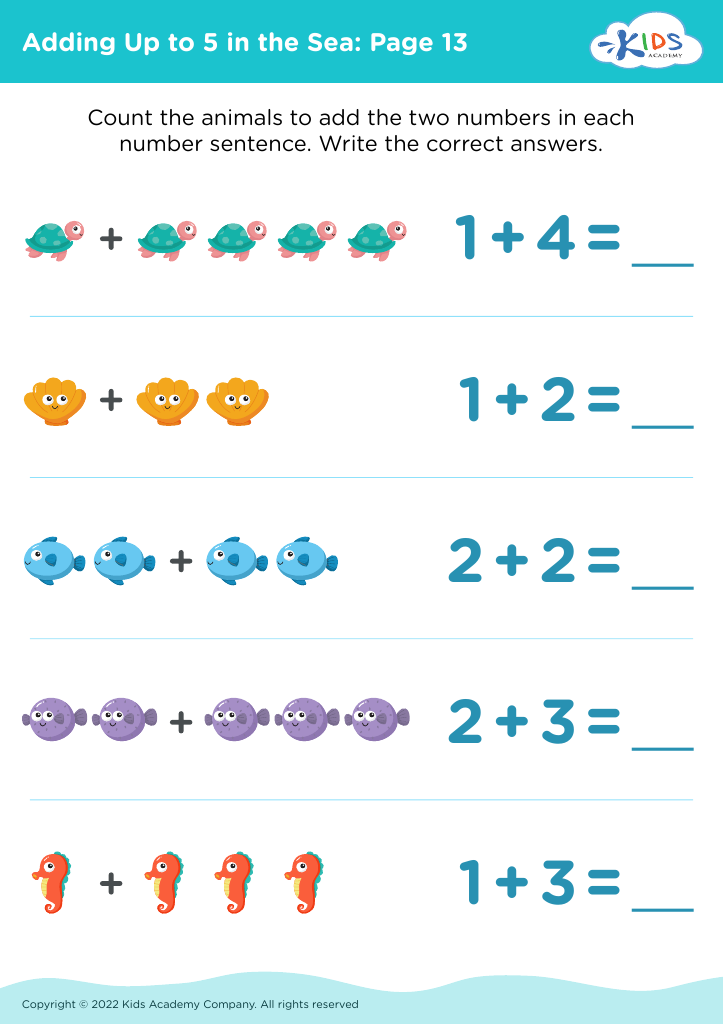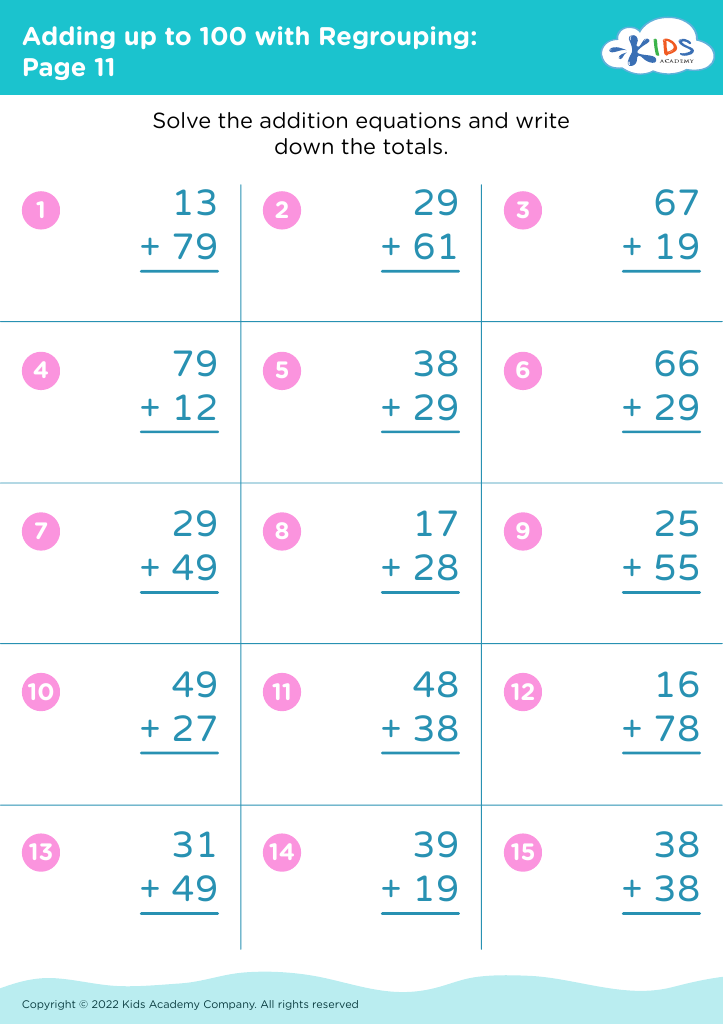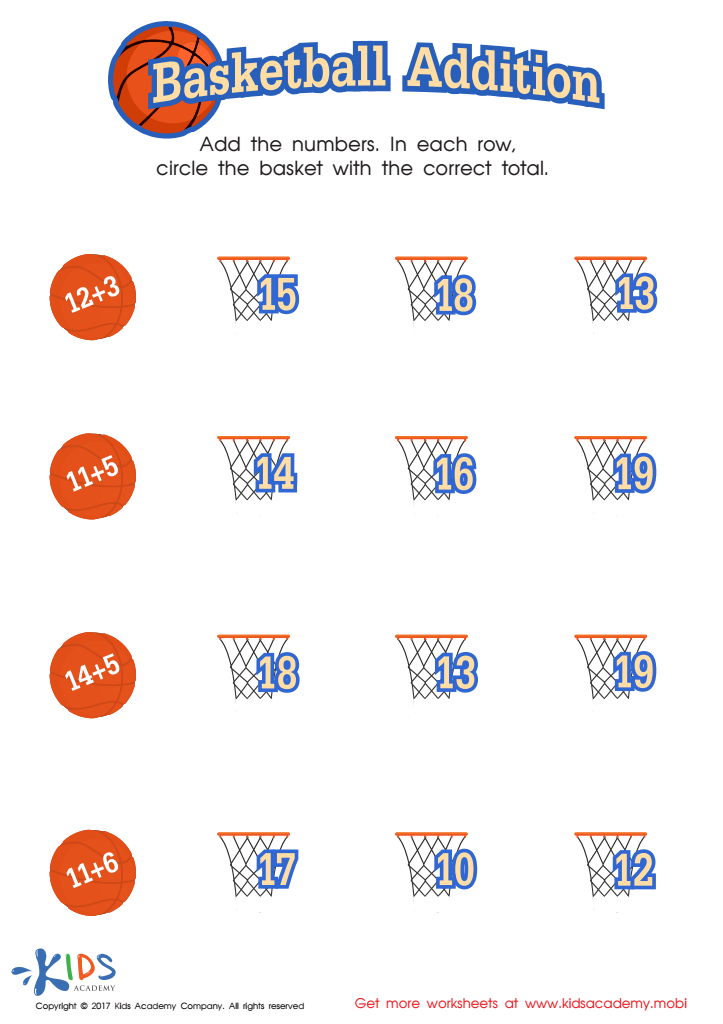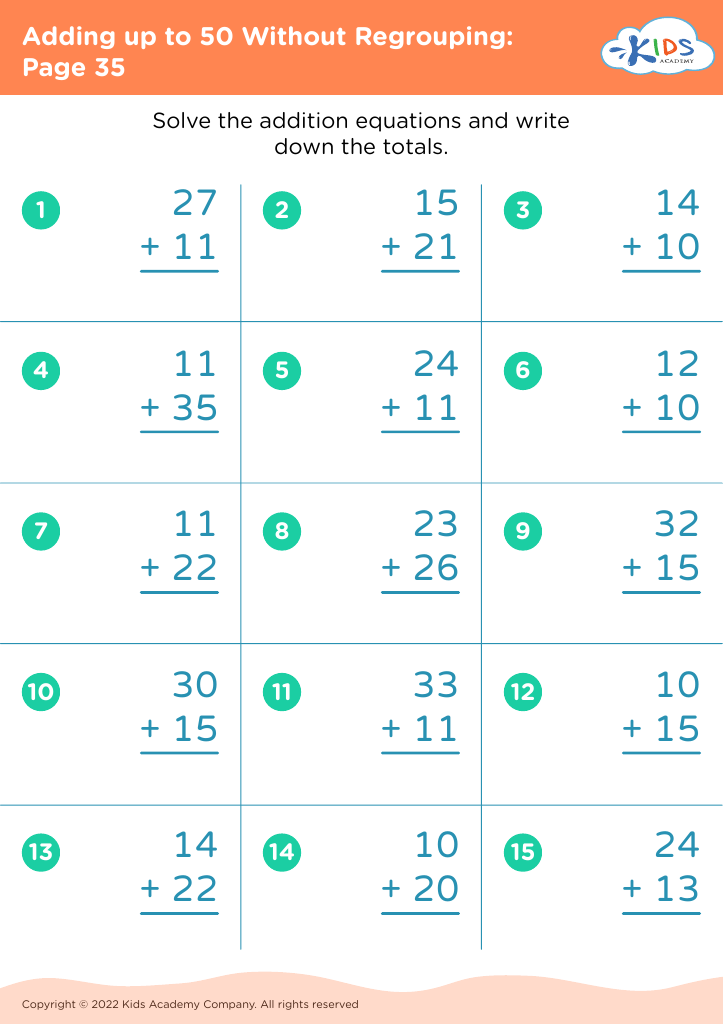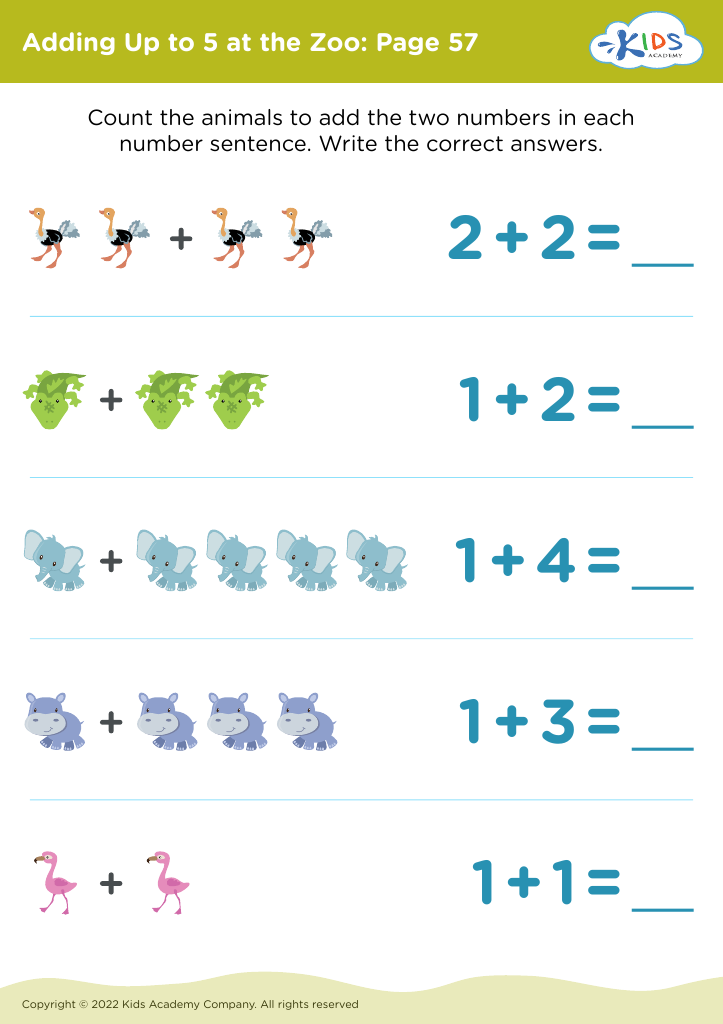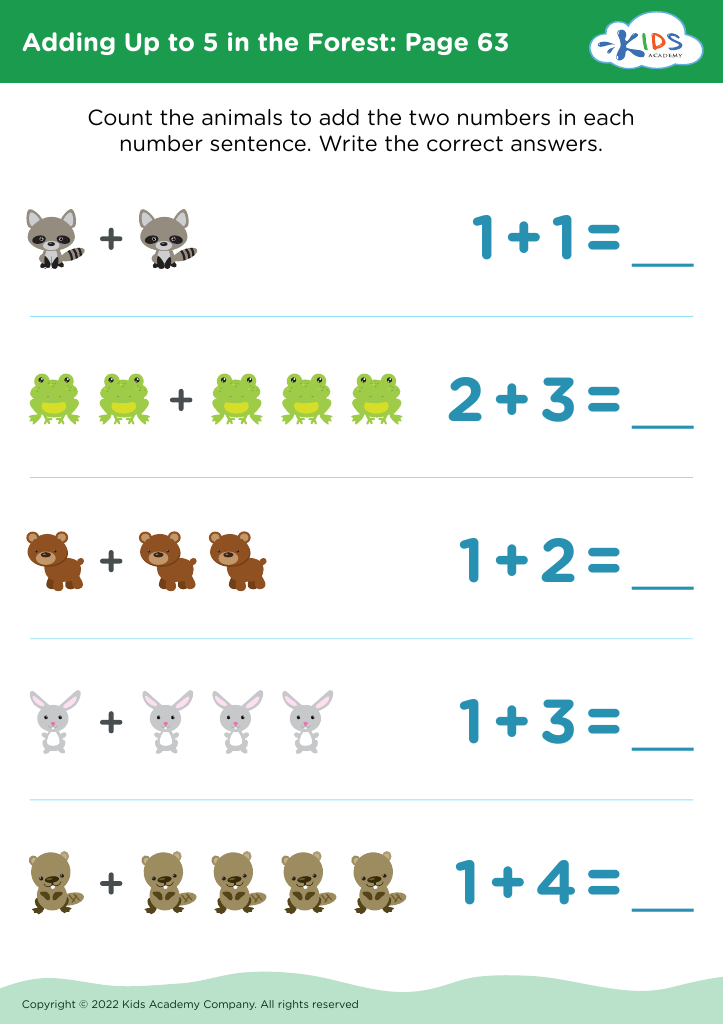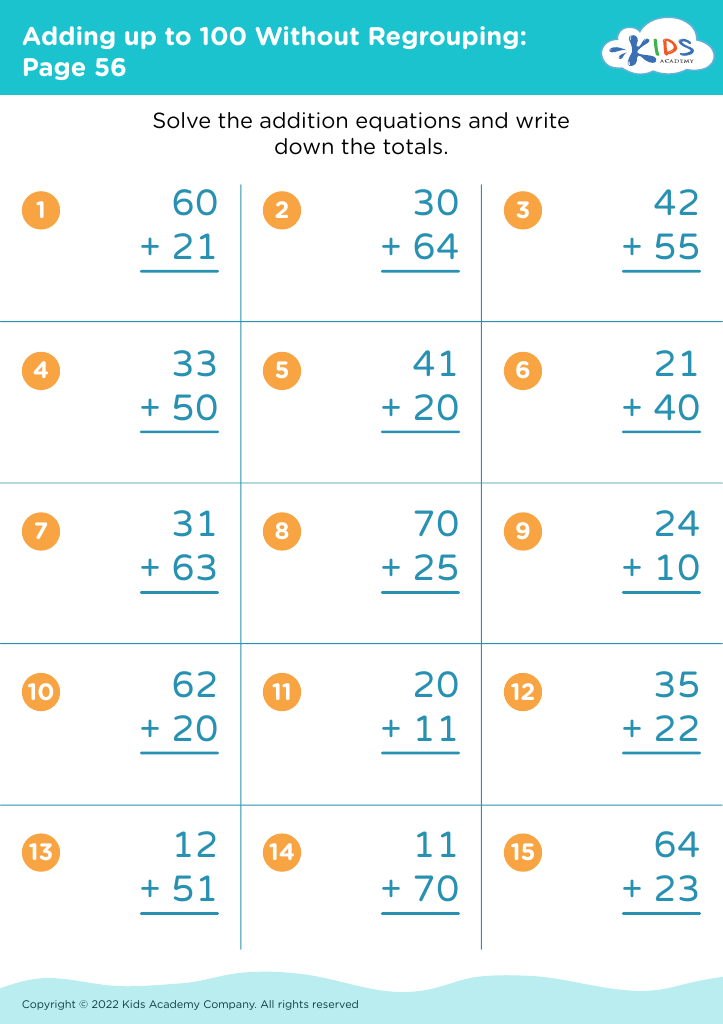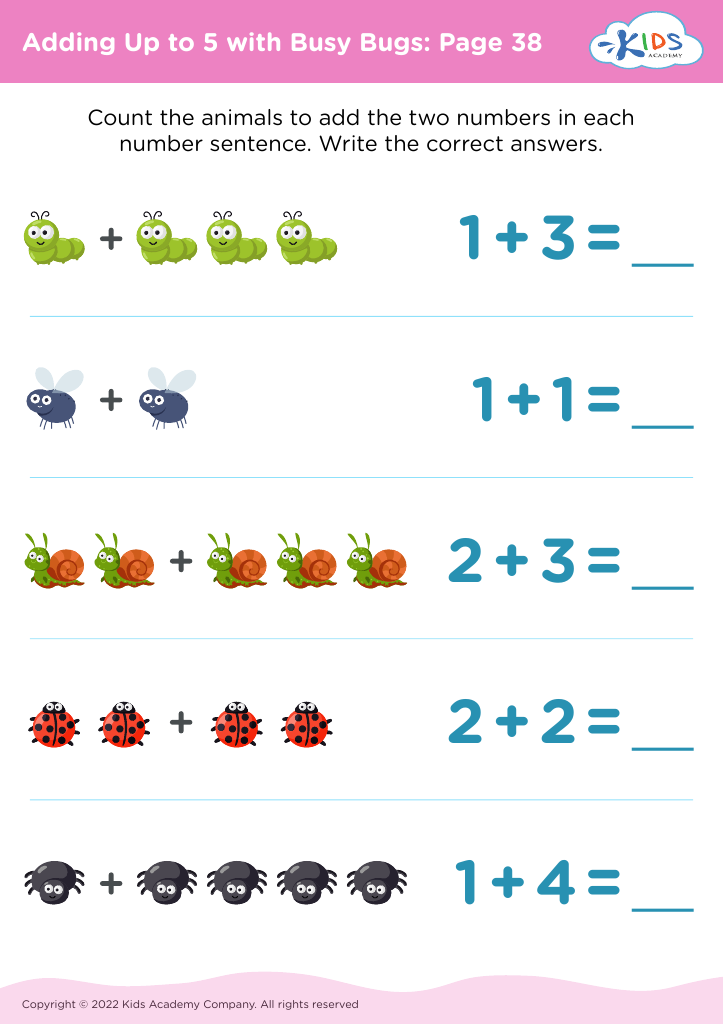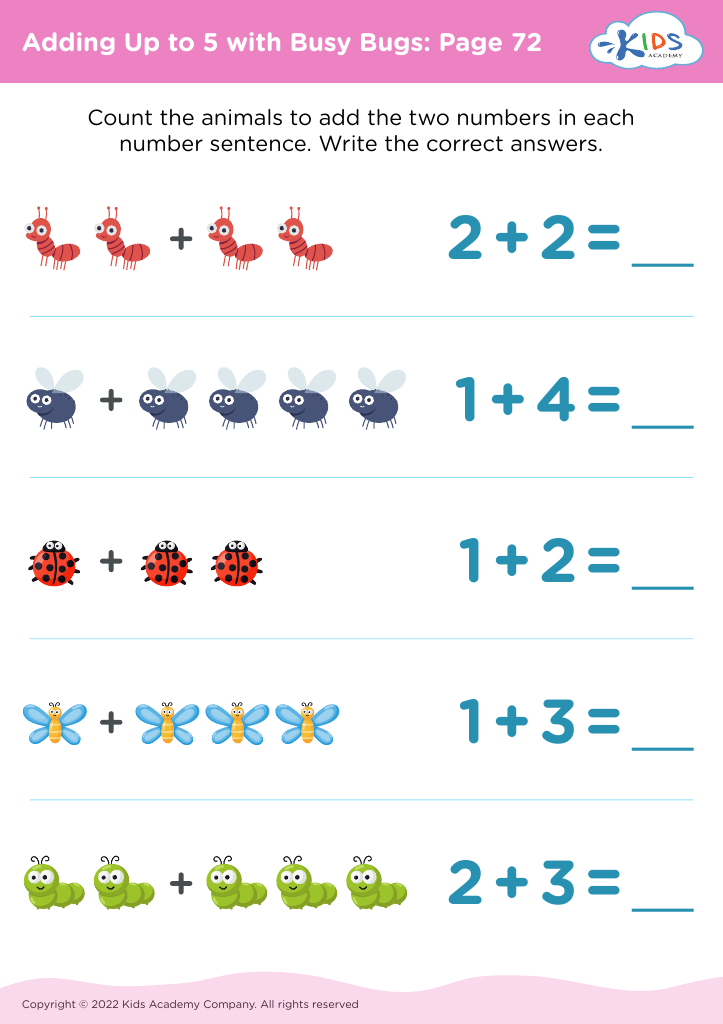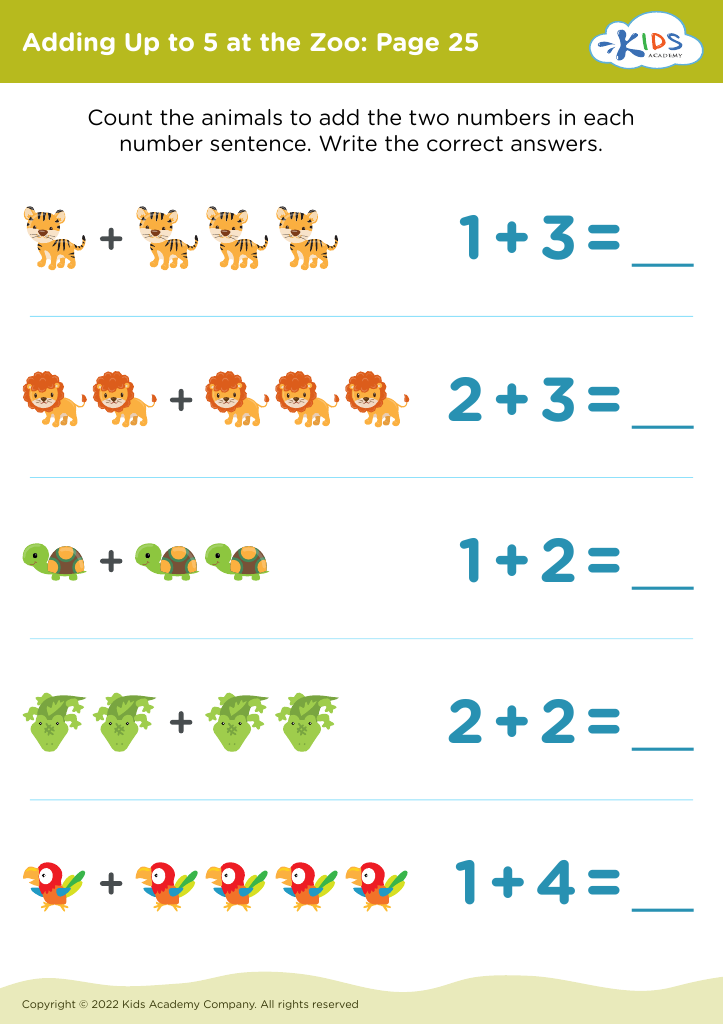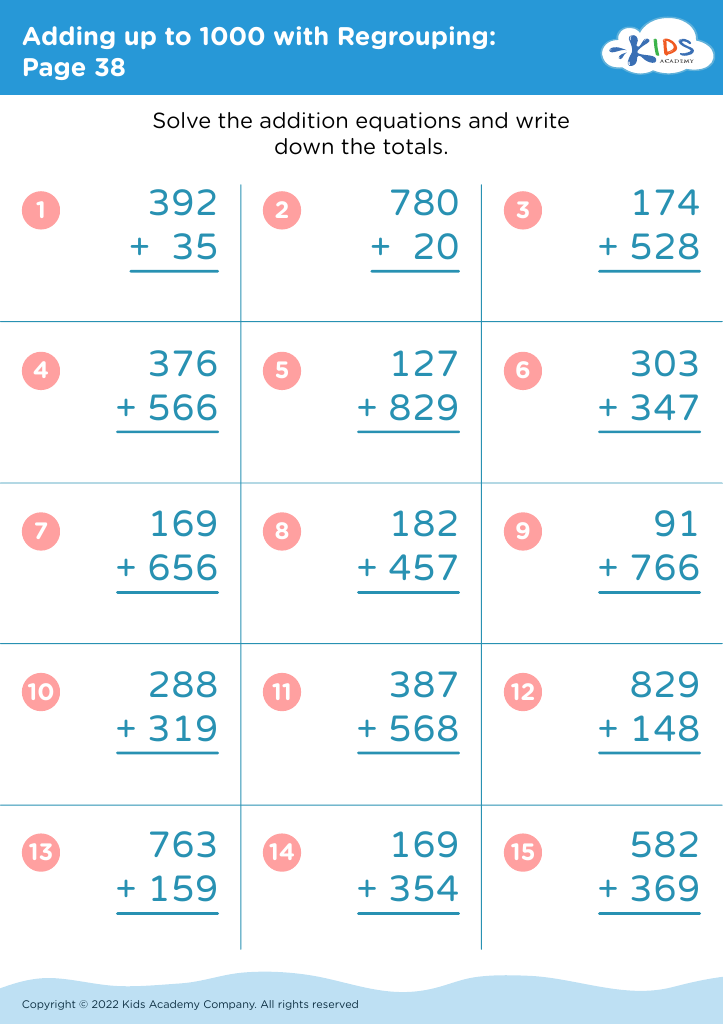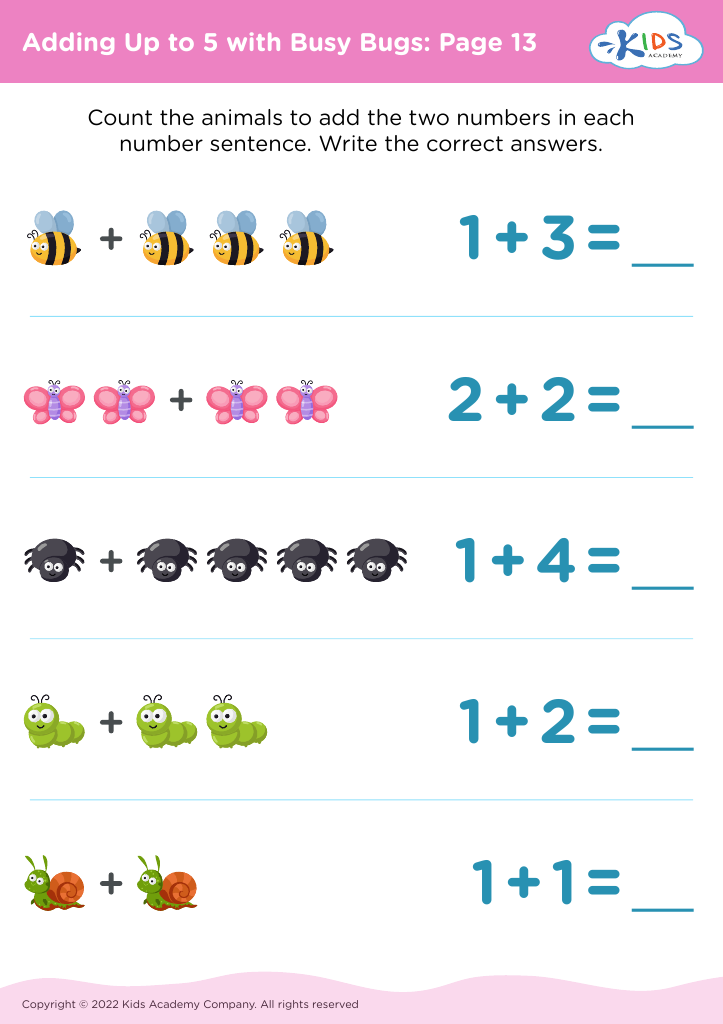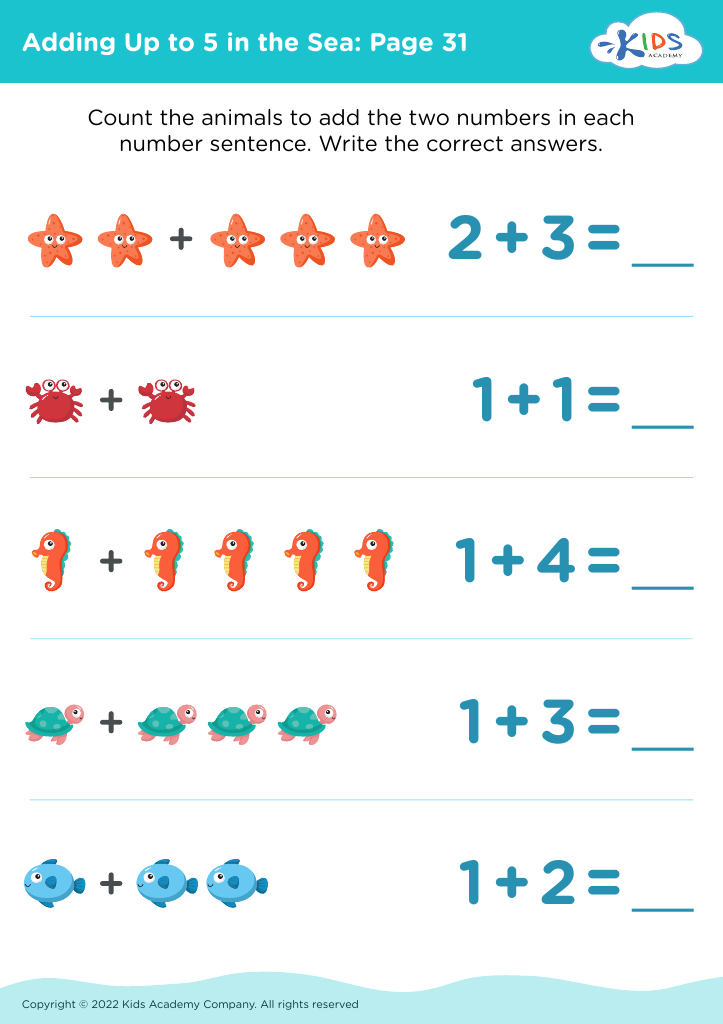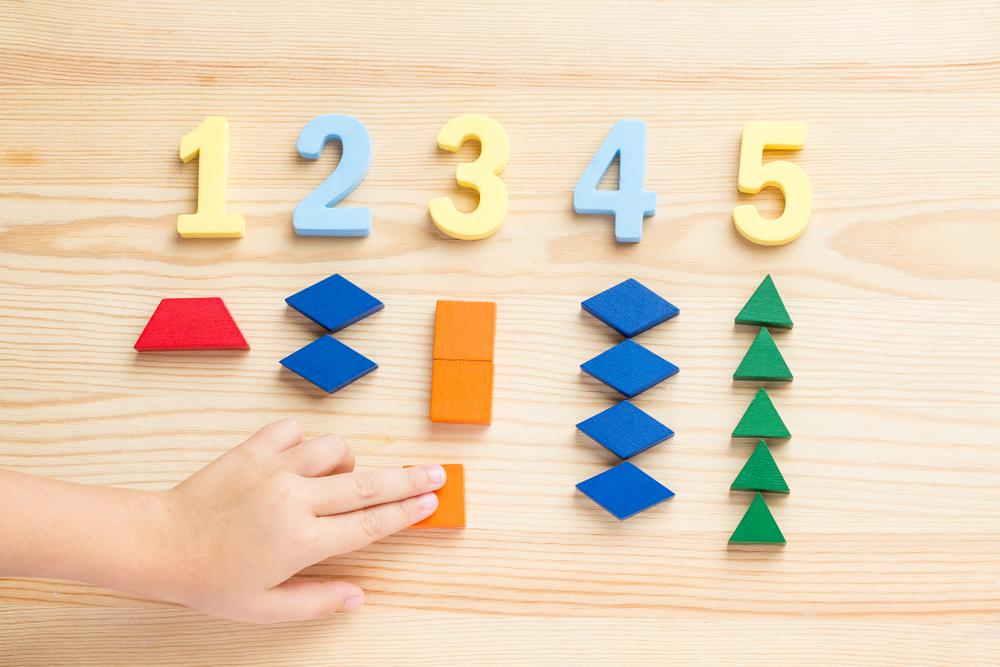Hand-eye Coordination Addition & Subtraction Worksheets for Ages 5-9
29 filtered results
-
From - To
Boost your child's math skills with our Hand-eye Coordination Addition & Subtraction Worksheets, designed for ages 5-9. These engaging worksheets help young learners practice essential addition and subtraction while enhancing their hand-eye coordination. Each exercise promotes fine motor skills through fun, interactive math problems. Perfect for classrooms or at-home learning, our worksheets make math enjoyable and build a solid foundation for future success. Give your child the tools they need to excel in math and improve their coordination with these expertly crafted resources. Download now and watch your child's confidence and abilities grow!
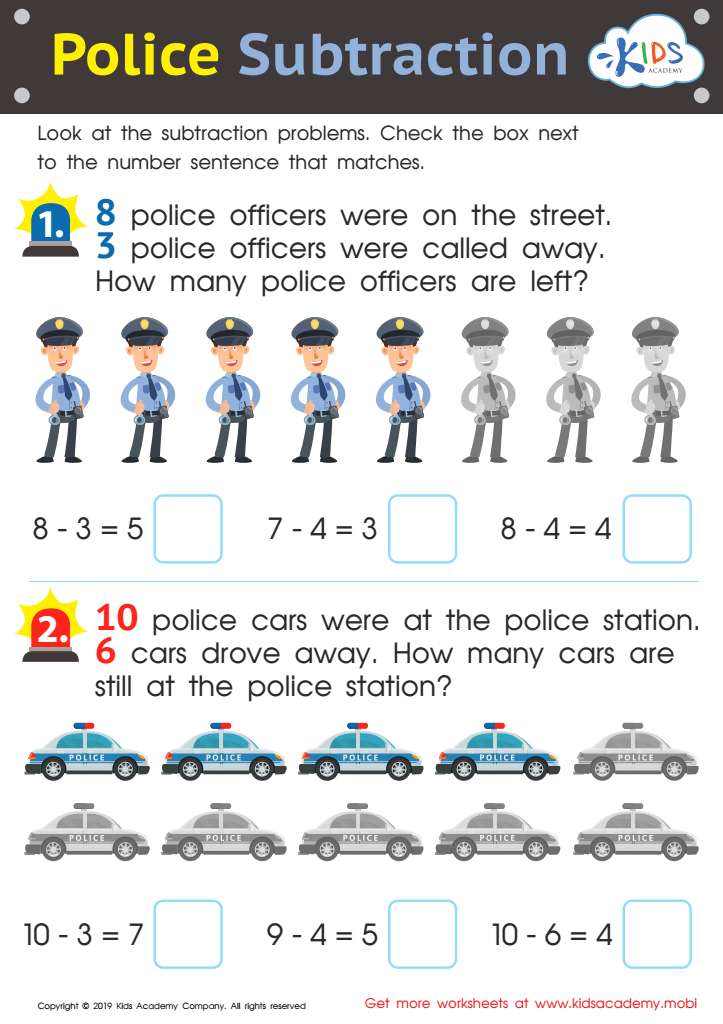

Police Subtraction Worksheet
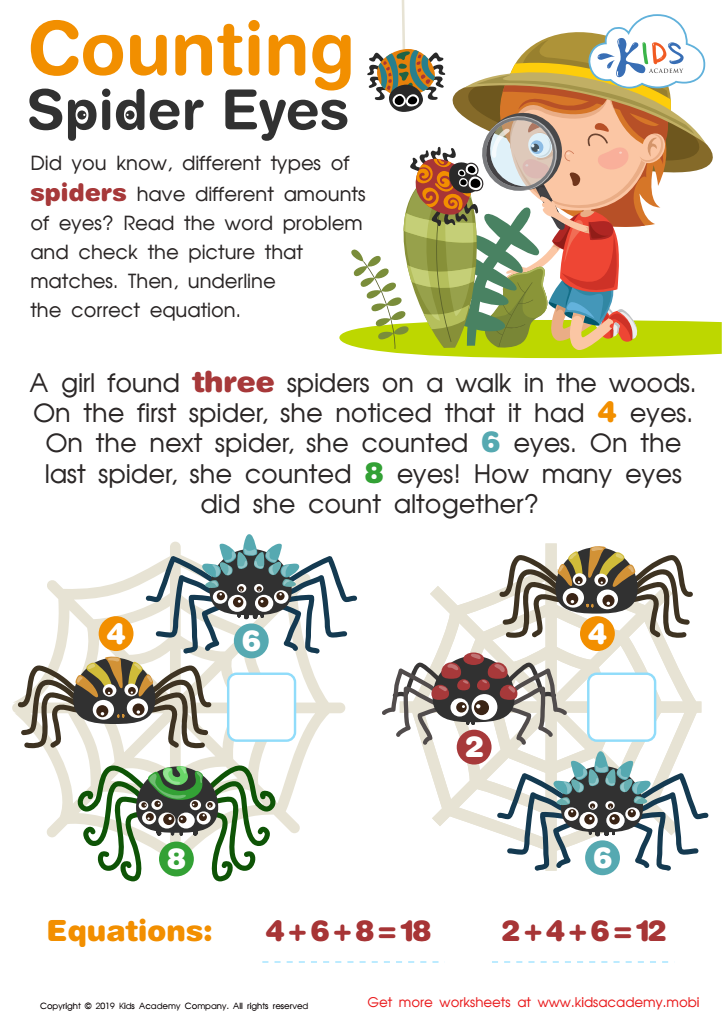

Counting Spider Eyes Worksheet
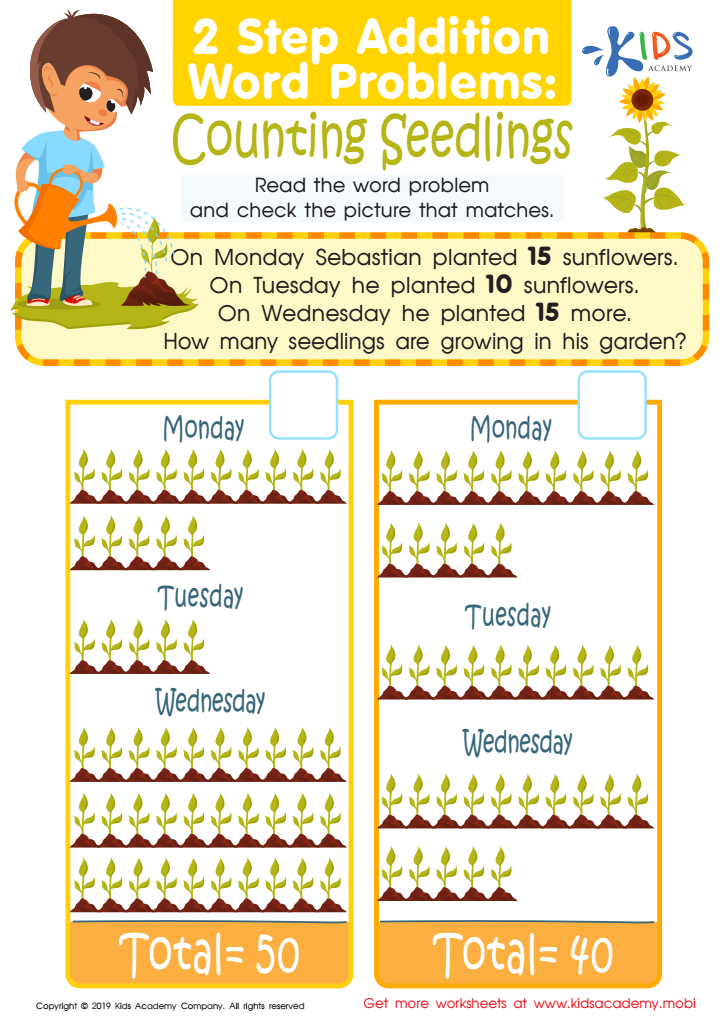

Counting Seedlings Worksheet
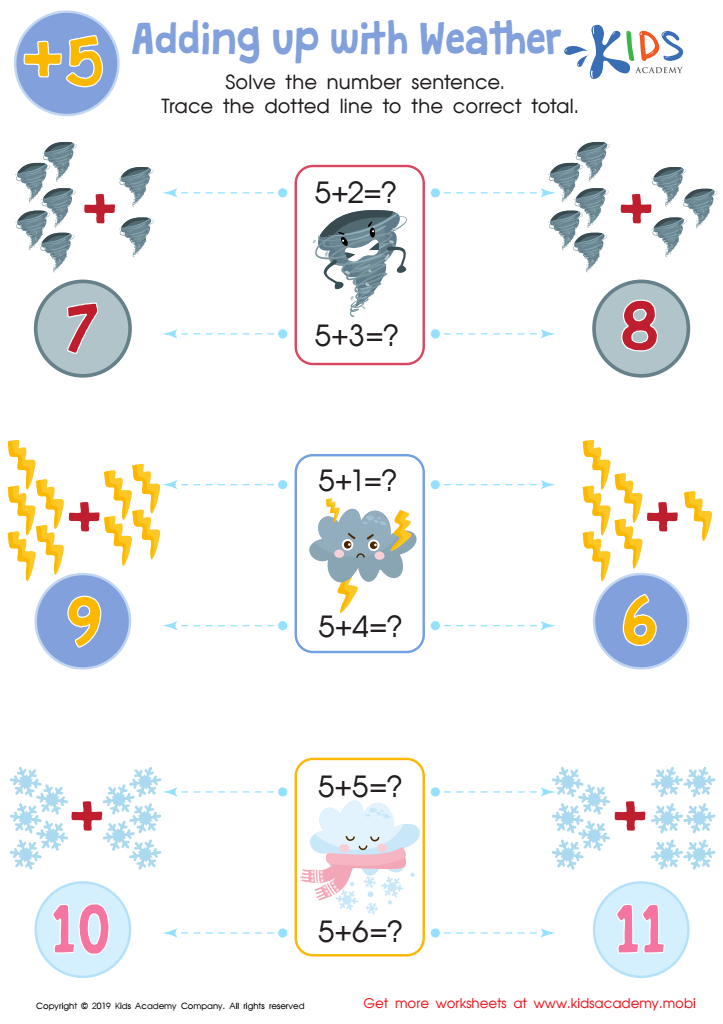

Adding up With Water Worksheet
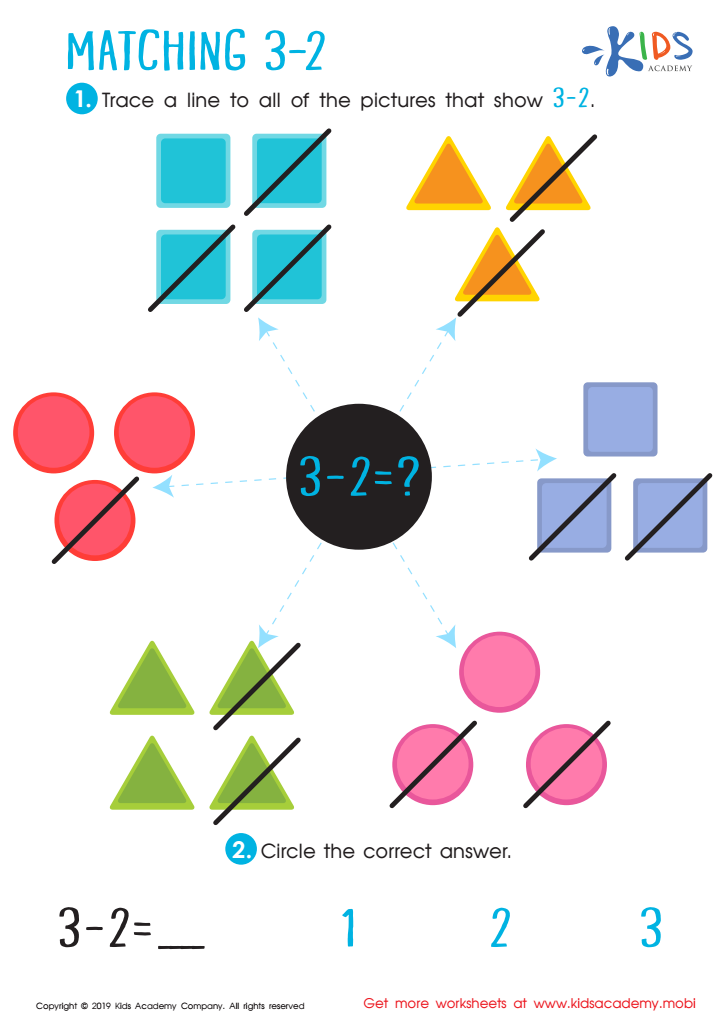

Matching 3-2 Worksheet
Hand-eye coordination is a fundamental skill that involves the synchronized control of eye movement with hand movement and processing visual input to guide the hands. For children aged 5-9, this skill is particularly important for several reasons, especially when integrated with learning mathematical concepts like addition and subtraction.
Firstly, good hand-eye coordination enhances fine motor skills, which are essential for writing numbers and mathematical symbols clearly. When children practice adding and subtracting through physical activities like manipulating objects or interactive games, they naturally develop better dexterity and precision.
Secondly, incorporating hand-eye coordination into addition and subtraction exercises can make learning more engaging. Physical activities ensure that children are not just passively absorbing information but actively participating, which helps maintain their interest and encourages energetic learners who are keen to explore and problem-solve.
Additionally, combining physical actions with mental calculations strengthens cognitive development, fostering better problem-solving skills and boosting overall academic performance. Kids are more likely to remember concepts when they actively interact with materials. For instance, using blocks to add or subtract can help solidify their understanding of mathematical principles through tactile and visual feedback.
Overall, intertwining hand-eye coordination with learning not only enriches the educational experience but also lays the groundwork for more advanced skills and academic success in the future.
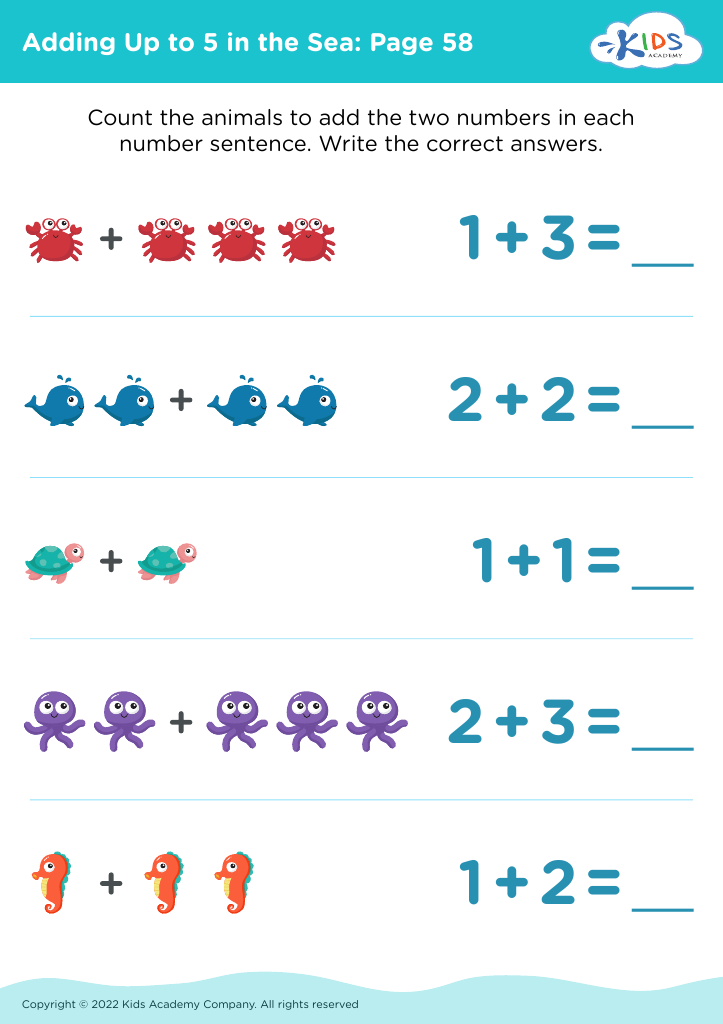
 Assign to My Students
Assign to My Students
